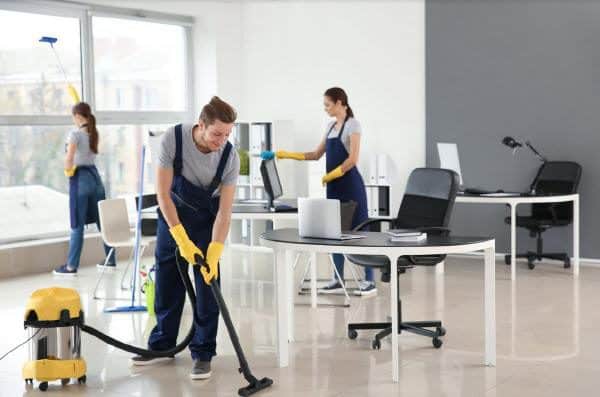Editable Private Label Rights PLR digital products have emerged as a powerful tool for entrepreneurs and business owners seeking to boost their business growth. These products, which come with the right to modify and resell, offer immense flexibility for creating valuable, personalized content. Whether you are looking to enhance your product offerings, expand your marketing materials, or create an entirely new revenue stream, editable PLR digital products can play a pivotal role in shaping your business trajectory. They provide an effective means of leveraging existing content while allowing for customization to meet the unique needs of your audience. One of the most significant advantages of editable PLR products is their versatility. With access to a range of digital content such as eBooks, courses, templates, and software, you can tailor these resources to match your brand’s voice and vision. This customization capability ensures that the products you sell or distribute align with your business goals, enabling you to offer high-quality, relevant content without having to create it from scratch.
Whether you are targeting a niche market or a broader audience, editable PLR allows for the creation of tailored products that resonate with specific customer needs. In addition to personalization, editable PLR digital products are a cost-effective solution for business owners. Creating original content can be time-consuming and expensive, especially for those just starting out. With editable PLR, you can significantly reduce both the time and financial investment required to develop new products. Instead of hiring writers, designers, and developers, you can focus on editing and rebranding existing content. This enables you to quickly launch new products or marketing materials, driving revenue growth and boosting customer engagement without the usual overhead costs. Editable PLR products also present an excellent opportunity for businesses to diversify their offerings.
By modifying and repurposing these products, you can introduce new revenue streams or enhance existing ones. For example, a business focused on fitness could take a PLR workout guide and transform it into a personalized coaching program, subscription service, or membership site. The possibilities are endless, allowing businesses to expand their product catalog without a significant increase in resources. This diversification can be crucial in maintaining customer interest and generating consistent sales over time. Furthermore, using editable PLR digital products can help streamline your marketing efforts. Many PLR packages come with ready-made sales pages, email sequences, and promotional graphics, which can be customized to fit your brand’s aesthetic and learn this here now https://plrdigitalproducts.net/. This can save you a considerable amount of time in the marketing process, allowing you to focus on strategy and customer acquisition. By leveraging these pre-designed assets, you can launch marketing campaigns faster and more effectively, increasing your reach and enhancing your brand presence. Finally, editable PLR products enable businesses to scale quickly. The ability to adjust content, update information, and create variations based on customer feedback ensures that businesses can stay relevant and competitive in a fast-paced digital market.




 Eco-friendly commercial cleaning services also emphasize the use of sustainable equipment and practices that minimize waste and conserve resources. For instance, many green cleaning companies utilize microfiber cloths and mops, which can be washed and reused multiple times, significantly reducing the amount of waste generated. These materials are also more effective at capturing dust and bacteria, which means less need for chemical disinfectants.
Eco-friendly commercial cleaning services also emphasize the use of sustainable equipment and practices that minimize waste and conserve resources. For instance, many green cleaning companies utilize microfiber cloths and mops, which can be washed and reused multiple times, significantly reducing the amount of waste generated. These materials are also more effective at capturing dust and bacteria, which means less need for chemical disinfectants.  Energy efficiency is another essential aspect of sustainable kitchen remodeling. Upgrading to energy-efficient appliances is a significant step towards reducing energy consumption and utility costs. From refrigerators and dishwashers to ovens and microwaves, Energy Star-rated appliances use less electricity and water, making them an eco-friendly choice. Additionally, incorporating LED lighting into your kitchen design is a simple yet effective way to reduce energy use. LED lights consume far less energy than traditional incandescent bulbs, and they last much longer, reducing waste. Water conservation is another key element to consider when designing a sustainable kitchen. Installing water-efficient fixtures, such as low-flow faucets and energy-efficient dishwashers, can help reduce water usage without sacrificing functionality. A smart faucet, for instance, allows you to control water flow and temperature, minimizing waste. Dishwashers with water-efficient cycles can also significantly reduce the amount of water used for cleaning dishes. By choosing water-saving appliances and fixtures, you can help conserve one of our most precious natural resources while also lowering your water bills.
Energy efficiency is another essential aspect of sustainable kitchen remodeling. Upgrading to energy-efficient appliances is a significant step towards reducing energy consumption and utility costs. From refrigerators and dishwashers to ovens and microwaves, Energy Star-rated appliances use less electricity and water, making them an eco-friendly choice. Additionally, incorporating LED lighting into your kitchen design is a simple yet effective way to reduce energy use. LED lights consume far less energy than traditional incandescent bulbs, and they last much longer, reducing waste. Water conservation is another key element to consider when designing a sustainable kitchen. Installing water-efficient fixtures, such as low-flow faucets and energy-efficient dishwashers, can help reduce water usage without sacrificing functionality. A smart faucet, for instance, allows you to control water flow and temperature, minimizing waste. Dishwashers with water-efficient cycles can also significantly reduce the amount of water used for cleaning dishes. By choosing water-saving appliances and fixtures, you can help conserve one of our most precious natural resources while also lowering your water bills.